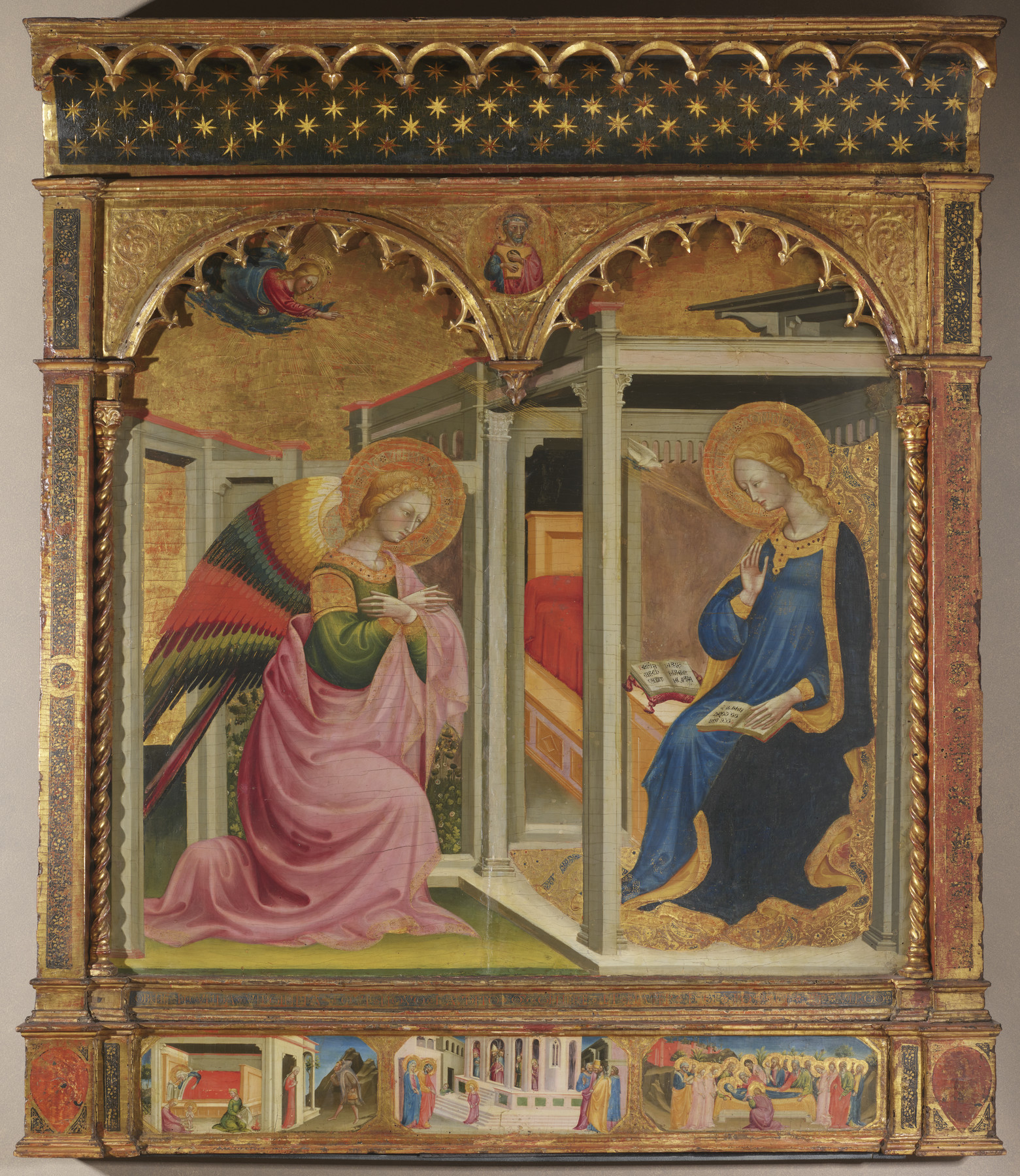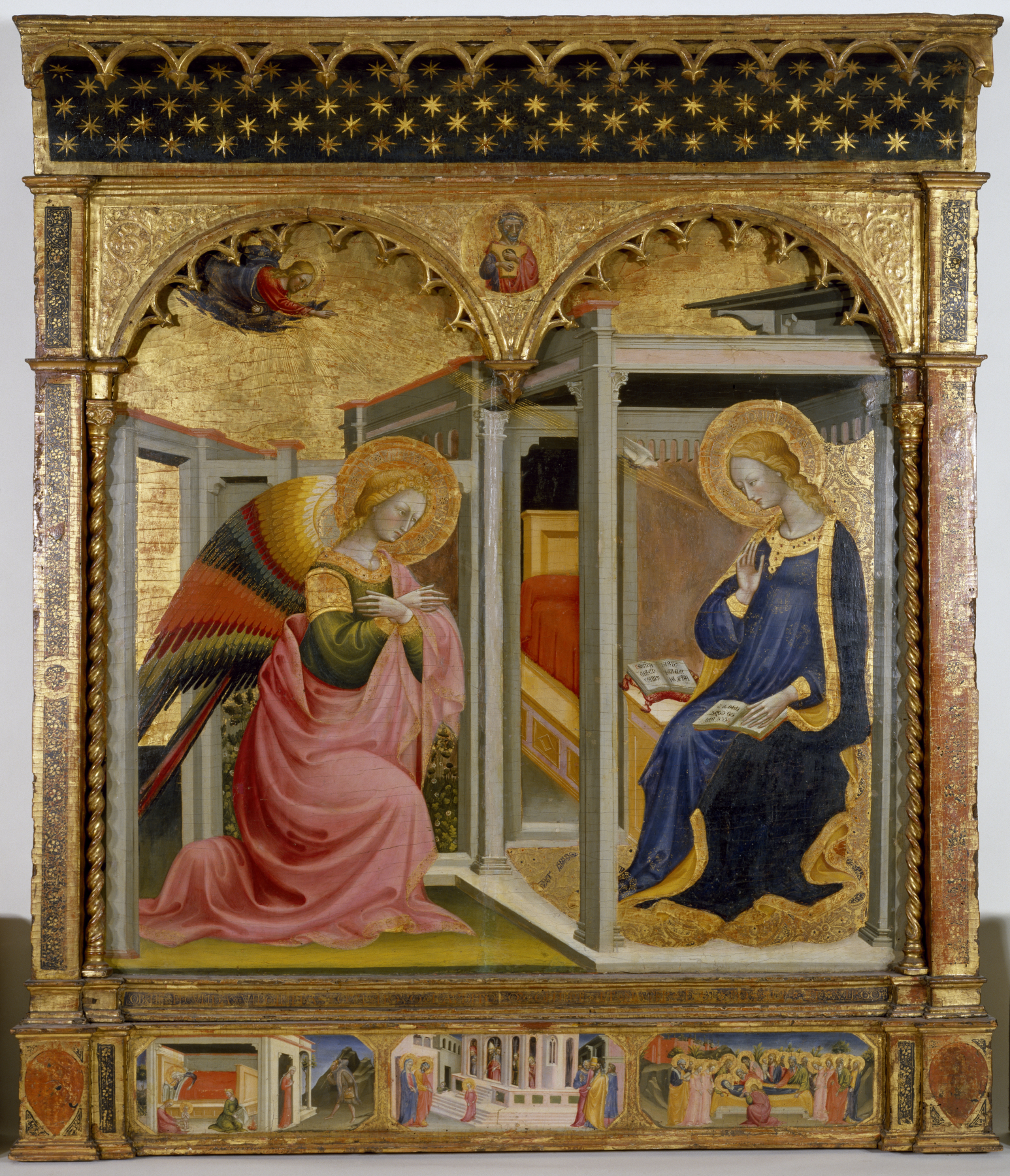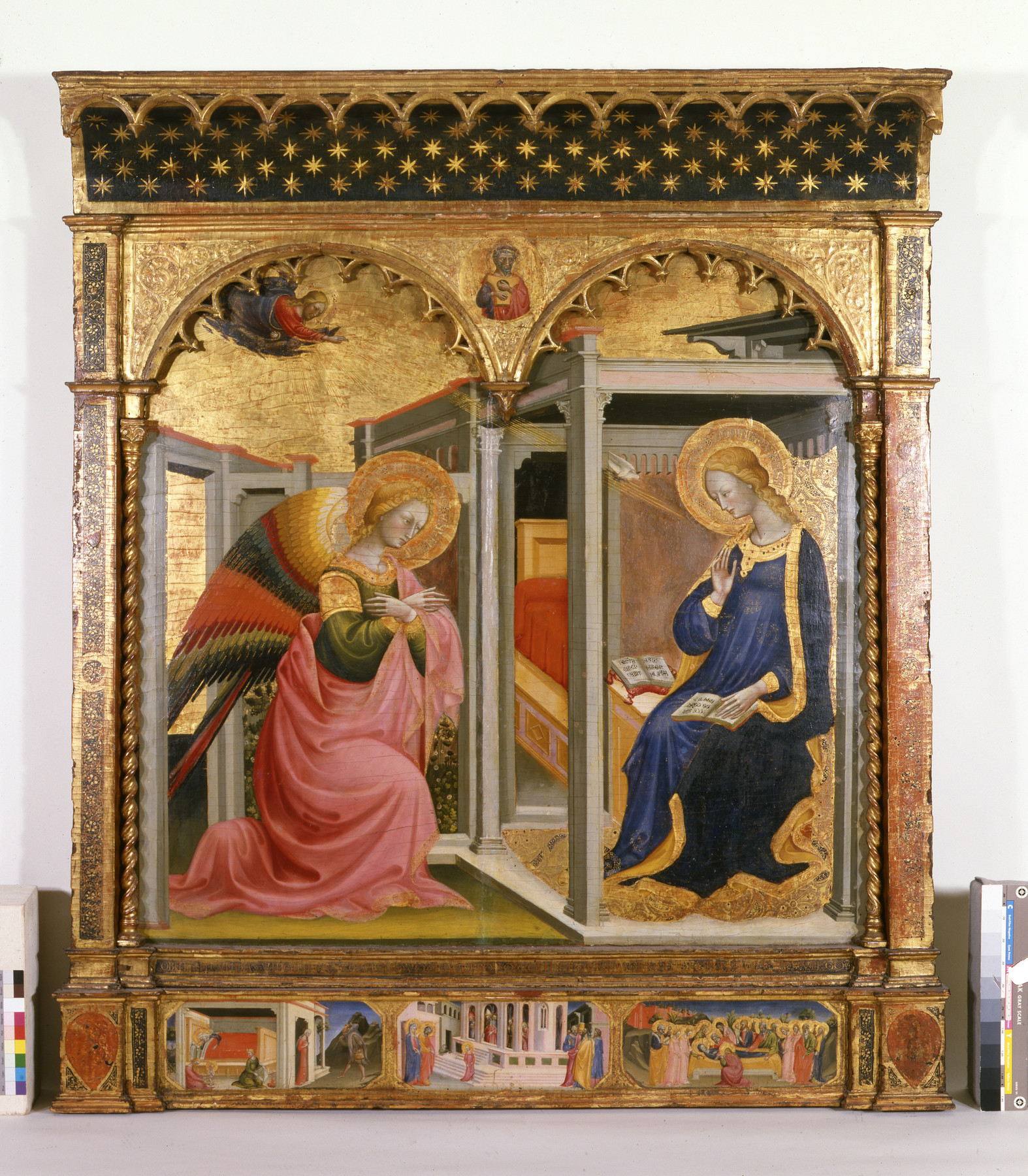The Annunciation
(Renaissance Europe )
This unusually well-preserved and exquisitely painted altarpiece represents the moment that the archangel Gabriel tells the Virgin Mary that she will give birth to the Son of God, while mary's gesture with her right hand signals her acceptance of her destiny. The dialogue between them is inscribed in their haloes. In the spandrel above, David, one of the ancestors of Christ, is painted in his role as the Old Testament prophet. The little garden behind Gabriel is a hortus conclusus (enclosed garden), symbolic of Mary's virginity.
The three predella panels (the painted base of an altarpiece) below this scene depict the birth of the Virgin, her presentation in the Temple, and her death. The less refined figure of David and the predella scenes differ in style from the Annunciation and must have been painted by Stefano di Antonio, who collaborated with Bicci di Lorenzo. The frame is original.
Inscription
Provenance
Provenance (from the French provenir, 'to come from/forth') is the chronology of the ownership, custody, or location of a historical object.
Stefano Bardini Collection, prior to 1890 [mode of acquisition unknown] [cited in Fiorenza Scalia, La citta degli Uffizi-Florence, 1982, p.46 with 1890 photo of Bardini Gallery showing this painting]; Lawrence W. Hodson, Wolverhampton, Compton Hall, England [date and mode of acquisition unknown]; Sale, Christie's, London, June 25, 1906, no. 187 [as early Italian school]; C. Fairfax-Murray, London and Florence, 1907 [mode of acquisition unknown]; Henry Walters, Baltimore, 1913, by purchase [Bernard Berenson as agent]; Walters Art Museum, 1931, by bequest.
Exhibitions
| 1998-2001 | Highlights from the Collection. The Walters Art Gallery, Baltimore. |
| 1962 | The International Style: The Arts in Europe Around 1400. The Walters Art Gallery, Baltimore. |
Conservation
| Date | Description | Narrative |
|---|---|---|
| Treatment | coated; examined for condition; examined for digitization; inpainted; loss compensation; repaired; surface cleaned; varnish removed or reduced | |
| 3/12/2001 | Examination | examined for condition |
| 6/1/2002 | Treatment | chemical analysis; examined for condition; examined for technical study; infrared spectroscopy; loss compensation; x-ray |
Geographies
Italy, Florence (Place of Origin)
Measurements
H with frame and canopy: 64 3/4 x W: 56 15/16 x D: 10 in. (164.4 x 144.7 x 25.4 cm); Main panel visible painted surface H: 44 1/2 x W: 49 x Approx. D: 1 3/4 in. (113 x 124.5 x 4.4 cm); Middle spandrel roundel approx. Diam: 5 1/2 in. (14 cm); Birth of the Virgin painted surface H, exclusive of gold borders: 5 11/16 x W: 13 9/16 in. (14.5 x 34.5 cm); Presentation of the Virgin painted surface H, exclusive of gold borders: 5 11/16 x W: 13 3/8 in. (14.5 x 34 cm); Dormition of the Virgin painted surface H, exclusive of gold borders: 5 11/16 x W: 13 9/16 in. (14.5 x 34.5 cm)
Credit Line
Acquired by Henry Walters, 1913
Location in Museum
Accession Number
In libraries, galleries, museums, and archives, an accession number is a unique identifier assigned to each object in the collection.
In libraries, galleries, museums, and archives, an accession number is a unique identifier assigned to each object in the collection.
37.448






